The ABS has released its Australian demographic statistics for the September quarter of 2014, which revealed that Australia’s population growth rate continues to fall, driven by declining growth in the two key mining states of Western Australia and Queensland.
According to the ABS, Australia’s population grew by 1.53% in the year to September 2014 – the seventh consecutive quarterly decline in growth – albeit population growth remained well above the 30-year average of 1.38%.
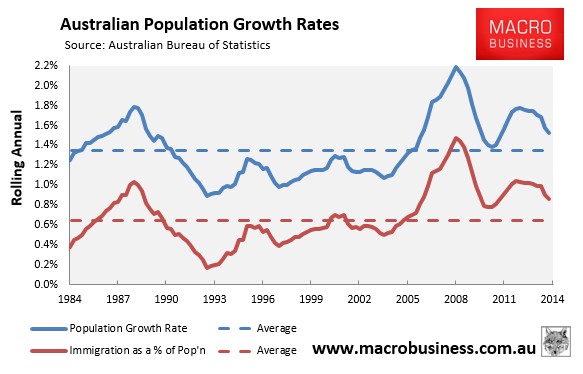
The growth in the number of persons in the year to September 2014 was 354,600, which was still 95,239 above the 30-year average:
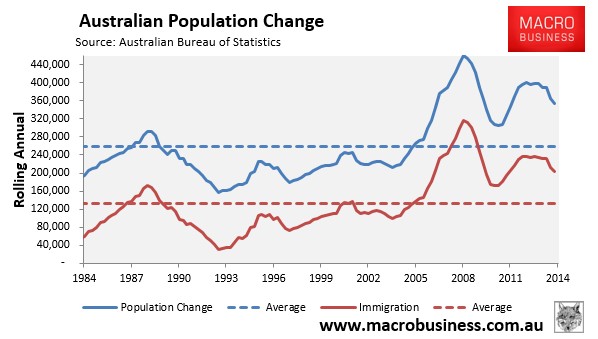
Australia’s population growth continues to be driven by net overseas migration (NOM) – defined as those residing in Australia for 12 months or more (see next chart).
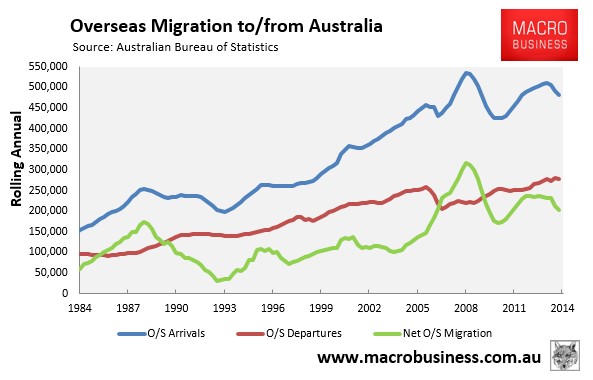
While NOM has declined from a peak of 315,700 in calendar year 2008 to 203,900 in the year to September 2014 – it remains well above the long-term average level of 132,135.
Moreover, as shown below, the proportion of population growth derived from NOM – 57.5% in the year to September 2014 – remains well above the 30-year average of 48.2%:
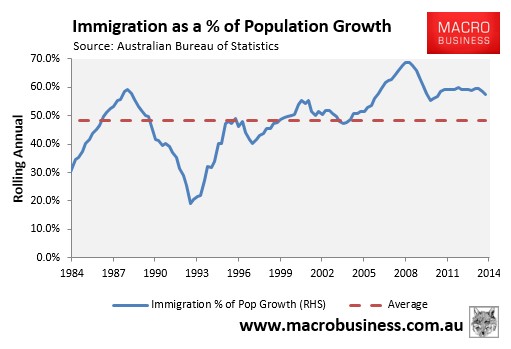
While natural increase – the difference between births and deaths – is not the main driver of Australia’s population growth, it too is running at levels well above the 30-year average (see next chart).
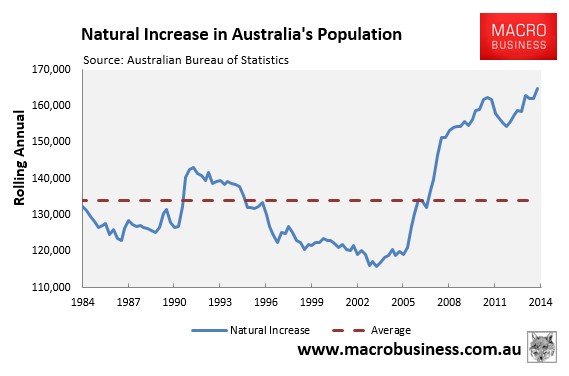
Population growth into Australia’s key resources state – Western Australia – continues to fall, although it remains at a high level overall. In the year to September 2014, Western Australia’s population grew by 2.12% (down from a peak of 3.72%); although it remained well above the national average (1.53%). Population growth into Queensland also fell to 1.49%, which was well down on the 2.05% growth rate recorded in the year to September 2012 and is now below the national average (see next chart).
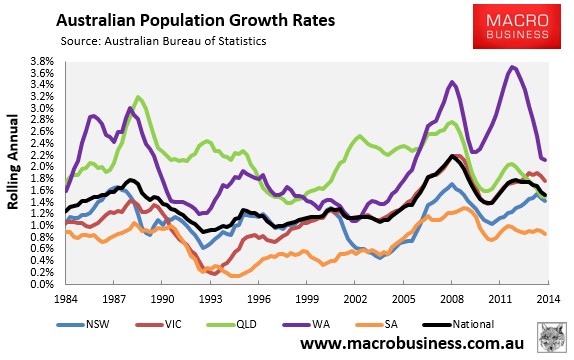
In sheer number terms, New South Wales is now the leader, recently taking the mantle from Victoria, with its population growth just off its record high. In the year to September 2014, New South Wales’ population grew by a whopping 106,365 with Victoria’s at 102,021 (see next chart).
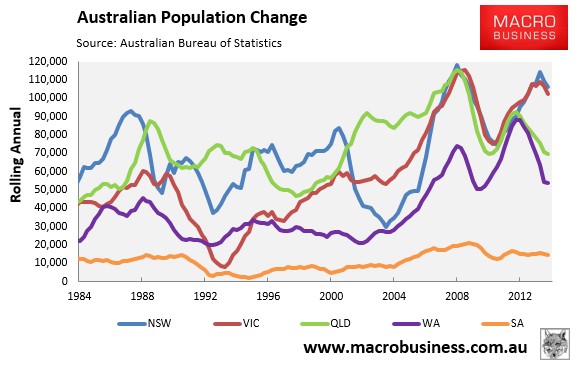
With the mining investment boom unwinding, along with the weak domestic economy, it is likely that Australia’s population growth will continue to fall, which is good news for those of us concerned about the nation’s growing infrastructure deficit and overall declining livability.

